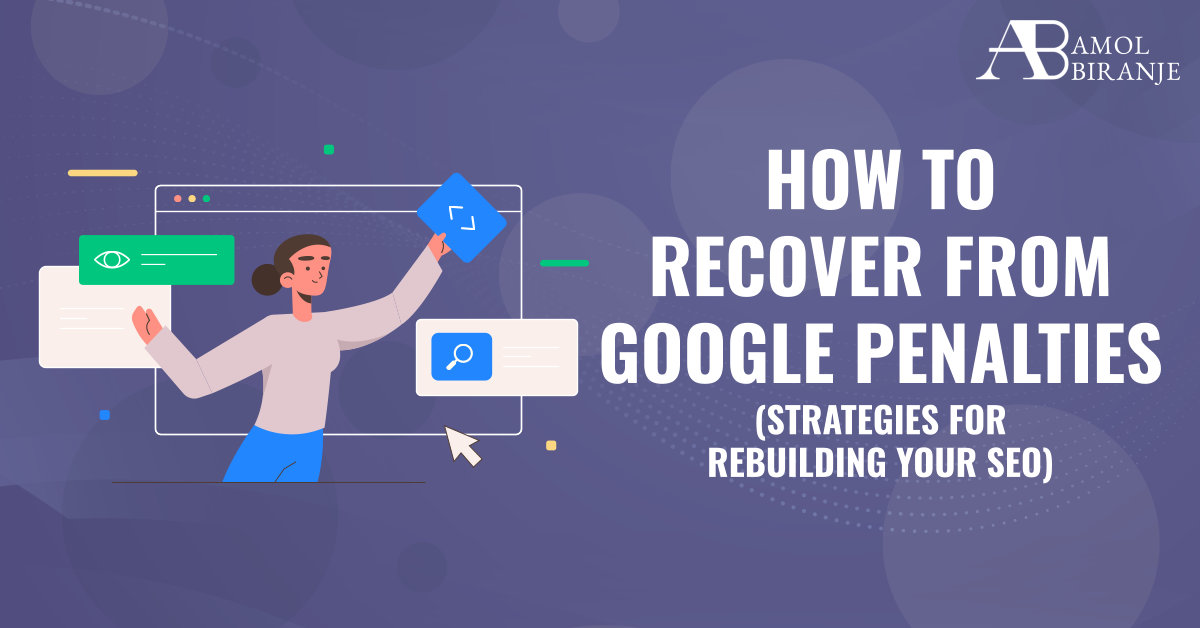Introduction
In the ever-evolving world of digital marketing, staying on the right side of search engines is crucial. However, even the most well-intentioned website owners can find themselves on the wrong side of Google’s penalties. Whether it’s due to algorithm updates or an unintentional violation of Google’s guidelines, penalties can wreak havoc on your website’s search engine ranking. But fear not! In this How to Recover from Google Penalties article, I will guide you through the strategies to recover from Google penalties and rebuild your SEO.
Understanding Google Penalties
Types of Penalties
Google penalties come in two primary forms:
1.1 Manual Penalties
Manual penalties are issued by Google’s human reviewers. They are usually the result of a clear violation of Google’s Webmaster Guidelines. Examples include unnatural links, thin content, and cloaking.
1.2 Algorithmic Penalties
Algorithmic penalties are automatic and often occur due to updates in Google’s algorithms, such as Panda or Penguin. They can affect your ranking without any manual intervention.
Identifying Penalties
2.1 Google Search Console
To identify penalties, use Google Search Console. It provides valuable insights into your website’s performance and any issues that may be causing penalties.
2.2 Analytics Data
Analyze your website’s traffic data. If you see a significant drop in organic traffic, it may be an indicator of a penalty.
Strategies for Recovery
Conduct a Thorough SEO Audit
3.1 Content Quality
Review your website’s content to ensure it’s high-quality, relevant, and free from duplicate or thin content.
3.2 Backlink Profile
Examine your backlink profile to identify and disavow toxic or spammy links.
Fix On-Page SEO Issues
4.1 On-Page Elements
Optimize your meta tags, headers, and URLs to align with best SEO practices.
4.2 Mobile-Friendly Design
Ensure your website is mobile-friendly to cater to a broader audience.
Build High-Quality Backlinks
5.1 Natural Link Building
Focus on acquiring high-quality, natural backlinks from reputable websites in your niche.
Content Marketing
6.1 Regular Updates
Consistently update your website with fresh, valuable content to engage your audience and boost your SEO.
6.2 Keyword Research
Perform comprehensive keyword research to optimize your content for relevant search terms.
Monitoring and Prevention
Continuous Monitoring
Regularly monitor your website’s performance and promptly address any potential issues to prevent future penalties.
Stay Informed
Keep abreast of Google’s algorithm updates and SEO trends to adapt your strategies accordingly.
Conclusion
Recovering from Google penalties is a process that requires dedication and a structured approach. By conducting a thorough SEO audit, fixing on-page issues, building high-quality backlinks, and focusing on content marketing, you can regain your website’s ranking and credibility. Remember to monitor your website continuously and stay informed about the ever-changing SEO landscape to avoid future penalties.
Frequently Asked Questions
How long does it take to recover from a Google penalty?
Recovery time varies based on the severity of the penalty and the effectiveness of your corrective actions. It can take several weeks to months.
Can I appeal a manual penalty from Google?
Yes, you can submit a reconsideration request through Google Search Console to appeal a manual penalty. Be sure to demonstrate your commitment to resolving the issues.
Are algorithmic penalties reversible?
Algorithmic penalties can be reversed by making the necessary improvements to your website’s content and backlink profile. Once Google’s algorithm reevaluates your site, you can recover your ranking.
Is it necessary to hire an SEO expert to recover from penalties?
While it’s not mandatory, working with an experienced SEO expert can expedite the recovery process and ensure you follow best practices.
How often should I conduct an SEO audit to prevent penalties?
Regularly performing SEO audits is recommended. Quarterly audits can help you identify and address issues before they lead to penalties.














0 Comments